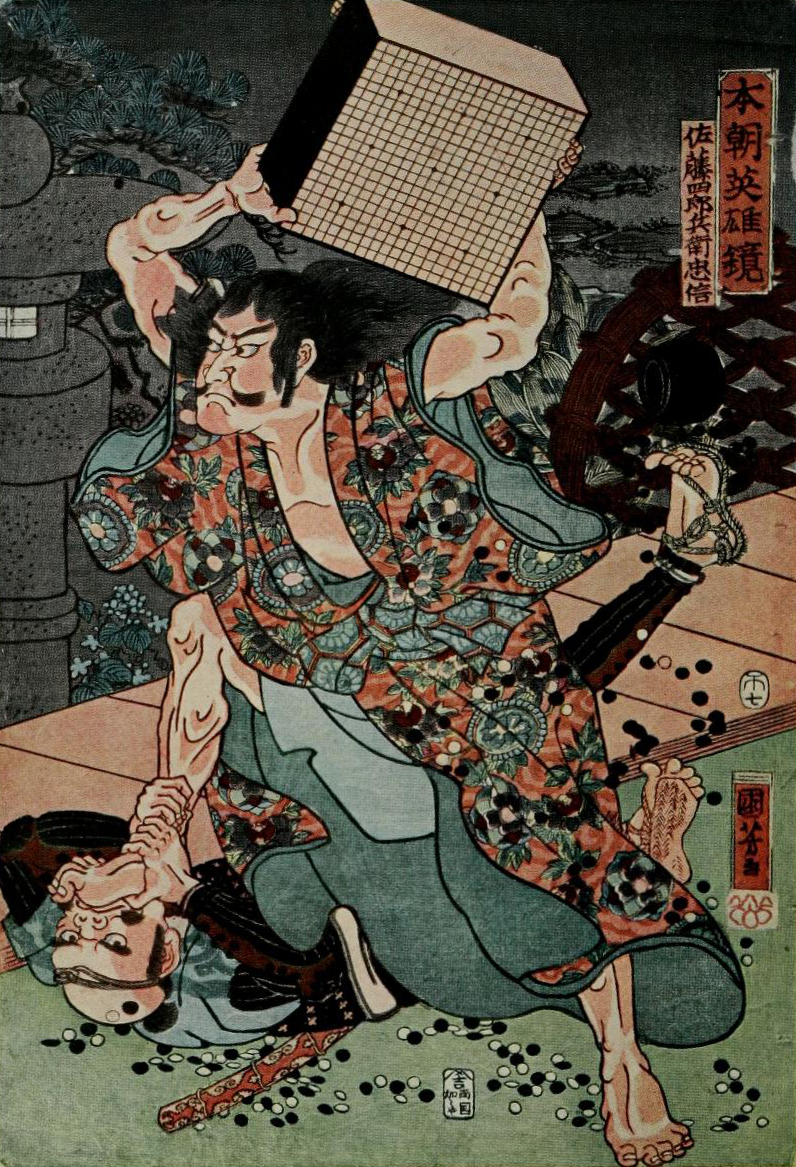First published in 1855, Sato Tadanobu Bravely Resisting Arrest (左藤忠信勇戦芳時が勢を移る圖) depicts a man fighting off a number of attackers with a Goban. But who was he and what is his story?
Satō Tadanobu (佐藤 忠信) was a samurai in service of Minamoto no Yoshitsune who lived between 1161AD and 1186AD. There are two accounts of his death, but which one is real may not be as important to us as which makes for the better story.
The first part of the story is the same in both accounts and is recorded in the Gikeiki (義経記, or Chronicle of Yoshitsune) and involves Tadanobu retreating with his master Minamoto no Yoshitsune’s forces to Kyushu, fleeing the advance of his half-brother Minamoto no Yoritomo’s army. Sato, serving as rearguard with a few of his men, aided the retreat by donning Yoshitsune’s armor and, acting in disguise as Yoshitsune, killing twenty of his pursuers. Though his companions died in the fight, Tadanobu escaped and continued on to Kyoto to take refuge in the house of a woman he knew there.
This is where the stories diverge, and where the subject of this painting comes from:
Telling #1: While staying at his acquaintance’s house, he was discovered and attacked. He committed seppuku before he could be captured alive.
Telling #2: Sato Tadanobu was enjoying a game of Go at his acquaintance’s house, when he was suddenly attacked by Yoritomo’s men. Unable to reach his weapons, he grabbed the Goban he was playing on and proceeded to single-handedly beat a number of armed and armored samurai to death with it before he was able to reach his weapons and commit seppuku, thus evading capture by the overwhelming force.
In the Kabuki plays (such as Yoshino Shizuka Goban Tadanobu and Yoshitsune Senbon Zakura) and Ukiyo prints inspired by this event, Tadanobu is implied to be a Genkurō (fox spirit) due to his cunning impersonation of Yoshitsune.
deleted by creator



